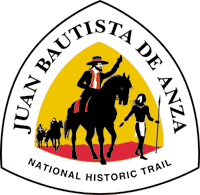“Please write a sample post about the de Anza Trail”
September 23, 2025 [edited by Greg Smestad]

The Juan Bautista de Anza National Historic Trail connects desert, valley, and coastline, telling a story that you can walk. Spanning Arizona and California, its signed segments connect neighborhoods and open spaces into a living corridor of history. Whether you’re stepping onto a quiet dirt path beside cottonwoods or cruising a paved greenway through town, the trail invites you to slow down and notice where past and present meet.
This route commemorates the 1775–1776 expedition led by Juan Bautista de Anza, over 240 colonists traveled from the Sonoran Desert to the shores of the San Francisco Bay. Along the way, they encountered landscapes already home to Indigenous peoples whose presence and stewardship long predated European maps. Today, interpretive signs, mission sites, and preserved corridors help visitors understand that layered story—challenging, complicated, and still unfolding.
A day on the Anza Trail can look different depending on where you step in. In Tucson, riverbank paths follow the Santa Cruz River, where you might spot herons lifting off at dawn. In California’s interior, oak savanna and rolling foothills create a gold-and-green mosaic in late summer. Near the coast, eucalyptus and bay breezes accompany urban stretches that are perfect for bikes and strollers. Pick a section that matches your pace: quiet nature walk, family ride, or run and walk towards your fitness goals.
Planning is simple: choose a trailhead, check local maps for your segment, and look for the Anza Trail emblem (logo) that marks the route. Much of the corridor is exposed, so bring water, sun protection, and layers for shifting winds and rain. Many segments welcome leashed dogs, bicycles, and even horses, but rules vary by jurisdiction—city parks, county open space, or federal land—so take a moment to review posted guidelines when you arrive.
What keeps visitors coming back is how the trail reframes everyday places: a familiar bridge becomes a waypoint on a journey that once reshaped the region; a quiet grove becomes a reminder to tread with care. If you go, treat cultural sites with respect, stay on marked paths, and pack out what you bring in. The Anza Trail rewards those who care with big views, small details, and a sense of connection you can feel with every step.



